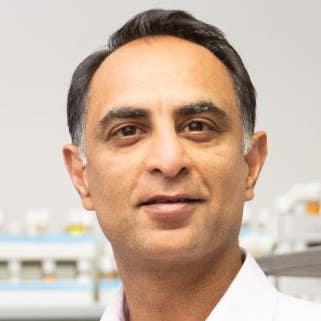Scientists discover sugar’s surprising role in Alzheimer’s and dementia
A surprising discovery about how brain cells handle sugar could shift how scientists approach dementia and Alzheimer’s treatments.

A new study links sugar metabolism in brain cells to tau buildup, offering a promising new strategy to treat Alzheimer’s and dementia. (CREDIT: CC BY-SA 4.0)
A surprising discovery about how brain cells handle sugar could shift how scientists approach dementia and Alzheimer’s treatments. In a new study published in Nature Metabolism, researchers uncovered a powerful connection between sugar storage in neurons and the progression of brain diseases like Alzheimer’s and frontotemporal dementia.
The research, led by scientists at the Buck Institute for Research on Aging, reveals that a form of stored sugar called glycogen plays a much bigger role in the brain than once believed. Although glycogen is commonly stored in the liver and muscles, small amounts also exist in the brain—mainly in support cells called astrocytes. Until recently, most experts thought this sugar held little value for neurons. That idea has now been turned on its head.
Breaking the sugar cycle in the brain
In this study, scientists explored how glycogen behaves in models of tauopathy—a group of brain diseases marked by the buildup of tau, a tangled protein linked to Alzheimer’s. Working with fruit flies and lab-grown human neurons derived from stem cells, the team found that neurons in these models stored excessive amounts of glycogen. Instead of helping, this sugar buildup appeared to worsen the disease.


Tau, the protein involved in neurofibrillary tangles, seems to bind directly to glycogen. This interaction prevents the sugar from being broken down.
“Stored glycogen doesn’t just sit there in the brain; it is involved in pathology,” said Dr. Pankaj Kapahi, the study’s senior author. This buildup causes a dangerous loop—tau blocks sugar breakdown, sugar piles up, and both contribute to further damage inside brain cells.
When glycogen can’t be broken down, neurons lose a vital defense against oxidative stress—a form of cellular damage tied to aging and disease. That’s where a key enzyme comes in. By boosting the action of glycogen phosphorylase (GlyP), which helps break down glycogen, researchers found they could interrupt this harmful cycle.
Related Stories
Restoring energy balance and reducing damage
Enhancing GlyP in neurons changed how sugar was used. Instead of being burned for energy in the usual glycolysis pathway, the sugar molecules were rerouted into the pentose phosphate pathway. This pathway creates NADPH and glutathione, compounds that help detoxify harmful molecules known as reactive oxygen species. These byproducts can wreak havoc in aging brains.
When GlyP activity was increased, flies showed fewer signs of tau-related damage. Their lifespans were also extended. Similarly, stem cell-derived human neurons from people with frontotemporal dementia responded positively, with fewer markers of disease.
Dr. Sudipta Bar, lead postdoctoral scientist on the study, explained the importance of this shift. “By increasing GlyP activity, the brain cells could better detoxify harmful reactive oxygen species, thereby reducing damage and even extending the lifespan of tauopathy model flies,” Bar said.
The team also observed that glycogen and tau colocalized in neurons—appearing together in the same areas—and could bind to one another. This supports the idea that the two interact directly and form a feedback loop that harms cells.
Dietary restriction boosts brain defense
One of the most intriguing findings in the study came from examining dietary restriction (DR). Long known to extend lifespan in many organisms, DR now appears to protect the brain by promoting glycogen breakdown. In flies that expressed harmful human tau proteins, DR improved brain health and reduced damage.
Mechanistically, DR works by activating a signaling route in the brain known as the cAMP pathway. This, in turn, enhances GlyP activity. When scientists used a drug called 8-Br-cAMP to mimic this effect, they saw the same benefits—fewer tau tangles and healthier neurons. “This work could explain why GLP-1 drugs, now widely used for weight loss, show promise against dementia, potentially by mimicking dietary restriction,” Kapahi added.
The potential for these findings to be translated into human treatments is significant. The researchers confirmed similar results in neurons derived from people with frontotemporal dementia. That makes the discovery especially exciting for those looking to develop new therapies. By targeting the sugar metabolism pathway—particularly the role of GlyP—it may be possible to reduce tau accumulation and improve brain function.
A path forward for future therapies
This new research sheds light on why brain cells may fail in neurodegenerative diseases. It suggests that tauopathies aren’t just caused by protein buildup but also by a failure to manage sugar properly inside neurons.
These diseases—including Alzheimer’s, frontotemporal lobar degeneration, and progressive supranuclear palsy—have all shown signs of altered sugar metabolism in the brain. Until now, the exact connection between glycogen and disease progression wasn’t well understood. This study changes that, pointing to sugar buildup as a hallmark of the disease process.
Abnormal glycogen accumulation has also been noted in other brain disorders like ALS, stroke, and Lafora disease. Although neurons don’t typically store large amounts of glycogen, this new evidence shows that when they do, it can trigger serious harm. This reinforces the idea that sugar breakdown is not just a side issue but a major player in neuron survival.
In addition to metabolic studies, the research included detailed genetic and biochemical analyses. The team used metabolomics to track how sugar molecules moved through different pathways. They also looked at gene activity to understand how DR and GlyP interacted.
Kapahi emphasized how using fruit flies helped fast-track these findings. “Work in this simple animal allowed us to move into human neurons in a much more targeted way,” he said. The study also involved collaborations with the Schilling and Seyfried labs for proteomics and the Ellerby lab for stem cell work.
Rethinking sugar in the aging brain
This breakthrough suggests that managing sugar in the brain—specifically by promoting its healthy breakdown—could become a new strategy for slowing or preventing dementia. Instead of only focusing on protein clumps like amyloid and tau, future treatments might include drugs that boost GlyP activity or mimic the effects of dietary restriction.
While more research is needed to move from lab models to human therapies, the path forward looks promising. “By discovering how neurons manage sugar, we may have unearthed a novel therapeutic strategy: one that targets the cell’s inner chemistry to fight age-related decline,” Kapahi said.
As the global population grows older, the need for effective dementia treatments is urgent. This study offers hope that something as fundamental as sugar metabolism might hold the key to unlocking longer, healthier brain function.
Understanding—and possibly rebalancing—how sugar is handled in the brain could help turn the tide in the battle against neurodegeneration.
Note: The article above provided above by The Brighter Side of News.
Like these kind of feel good stories? Get The Brighter Side of News' newsletter.



